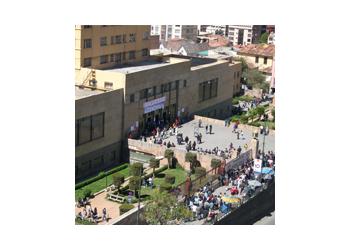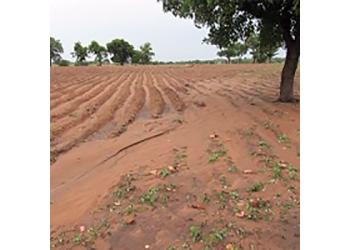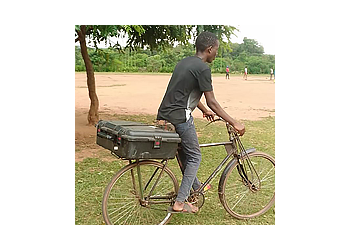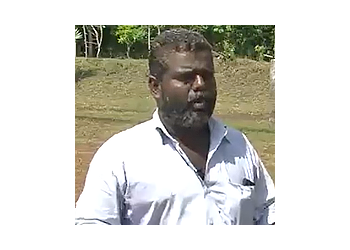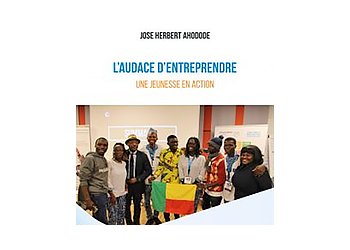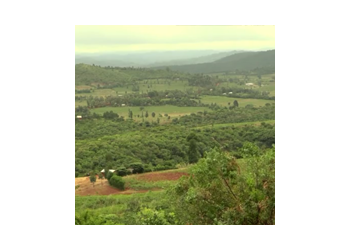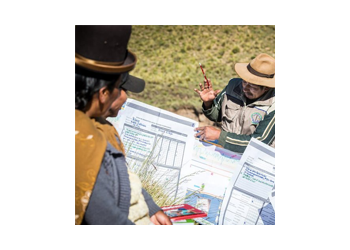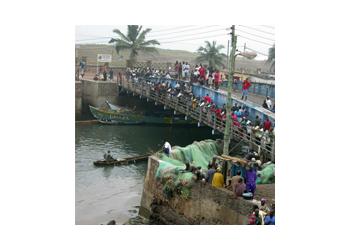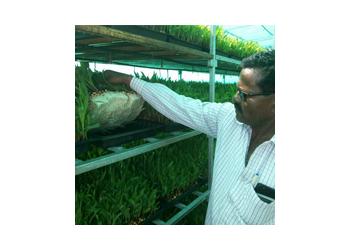Blogs
Teaching the farmers of tomorrow with videos
Youth around the world are leaving agriculture, but many would stay on the farm if they had appropriate technologies and better social services, as Professor Alejandro Bonifacio explained to me recently.
Dr. Bonifacio is from the rural Altiplano, the high plains of Bolivia. At 4,000 meters above sea level, it has some of the highest farmland in the world. Bonifacio has a PhD in plant breeding, and besides directing an agricultural research station in Viacha on the Altiplano, he teaches plant breeding part-time at the public university in La Paz (Universidad Mayor de San Andrés).…
Stop erosion
When farmers have limited access to arable land and soils are poor, limiting soil erosion can make the difference between harvesting a crop or nothing at all.
Soils are indeed at the core of any crop production system. Without a healthy soil, crops cannot thrive. While measuring the effect of soil erosion at national and global scales is almost impossible, all farmers see the difference when effective soil conservation techniques are in place.
Putting the right strategies in place to control erosion is becoming increasingly urgent as climate change is leading to rains…
An ingenious idea to expand business by helping farmers
We can easily see the truth of the maxim “necessity is the mother of invention” – or rather “ingenuity” in the case of Osman Majid, a young video dealer, locally known as a Deejay (DJ), who lives in Nathenje, a small town on the outskirts of Malawi. Unlike most other DJs, Osman has quickly expanded his video business and created a new customer base by screening farmer-training videos and sharing the videos on phones.
“Farmers pay to watch the training videos when I screen them and most of them like the videos as they are translated into Chichewa – the language we speak here,” said…
A Convincing Gesture
People use gestures intentionally to convey meaning, while many other hand movements are unconscious. Moving our hands helps us to grasp the right words. But human speech is also much more than words and hand gestures.
Tone and volume of voice (screaming, whispering), facial expression, head movements (like nodding) and body language (slouching vs standing ramrod straight) all help to reinforce meaning and to convey emotion. We also make humming and clicking noises, which are sounds, but not speech. This non-verbal communication is convincing because it’s natural. We can spot the…
Staying grounded while on the air in Ghana
It’s a simple matter to play a soundtrack about farming on the radio. The tricky part is making sure that the program connects with the audience, as I learned recently from Gideon Kwame Sarkodie Osei at ADARS FM, a commercial station in Kintampo, a town in central Ghana.
Since 2010 Gideon has been pleased to be part of an effort by Farm Radio International (FRI) that supported radio stations in Ghana, including ADARS FM, to reach out to farmers. With encouragement from FRI, Gideon started a weekly magazine show for farmers, where he plays Access Agriculture audio tracks. The…
Empowering youth for agribusiness
‘The audacity of entrepreneurship: youth in action,’ (L'audace d'entreprendre : une jeunesse en action) – the title of his latest book – encapsulates the essence of Benin-based José Herbert Ahodode’s vision to promote youth entrepreneurship in agribusiness as a model to create sustainable rural employment and wealth in African countries and make the agri-food sector more productive.
In addition to being a writer, José is an agricultural socio-economist and CEO of Crystal Agro Business, which is a consulting, training, communication and agricultural advisory company in Benin. He is…
Promoting agroecology in a biodiversity hotspot
The Greater Mahale Ecosystem (GME) with its stunning views and fascinating wildlife along the shores of Lake Tanganyika – the world's longest freshwater lake – must be an exciting region to visit in western Tanzania.
Considered as an important biodiversity hotspot, GME accounts for 90% of Tanzania’s endangered chimpanzees and over 250 endemic fish species. It is also home to colobus monkeys, giant forest squirrels, numerous bird species and several plant species that are only found in this region.
But the remoteness of this region – with limited road network, electricity…
Validating local knowledge
Yapuchiris are expert farmer-researcher-extensionists on the semi-arid, high plains of Bolivia. At 4000 meters above sea level (over 13,000 feet), seasoned farmers know how to observe plants and animals, clouds and stars, to predict the weather, especially to answer the Big Question on their minds: when will the rains start, so I can plant my crop?
All of the yapuchiris know some traditional ways of predicting the weather. Some yapuchiris also write their observations on a special chart they have designed with their agronomist colleagues at Prosuco, an organization in La Paz. The…
Of fertilizers and immigration
Chemical or mineral fertilizers have long been touted by agro-industry and by governments as a necessity to feed the growing world population. Sixty years after the start of the Green Revolution, the damage caused to farmland, surface water and groundwater, biodiversity and farmers’ livelihoods has forced policy-makers in India and in the European Union to curb the overuse of fertilizers and encourage more environmentally-friendly ways of farming.
But fertilizers have also affected immigration in various ways. Immigration can be triggered by political suppression or economic…
Learning to grow soil-less fodder
Hydroponic farming – a system where plants are grown in water instead of soil – seems too high-tech and costly for smallholders in developing countries. But dairy farmers in the Satara district in the Indian state of Maharashtra have in recent years learnt to successfully produce quality green fodder using a simple low-cost hydroponic system.
Green fodder is vital to feed livestock. But because of the growing pressure on land and water, producing sufficient green fodder throughout the year is a big challenge to meet the requirements of the huge livestock population of India.…

